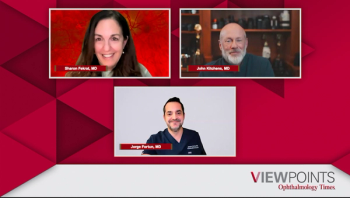
Arun Gulani, MD, demonstrates how the Gni instrument enhances surgical control and patient comfort
The Gni instrument technology represents a significant innovation in ophthalmic surgery, particularly in cataract procedures, according to Gulani.
Arun C. Gulani, MD, describes how the Gni instrument breaks through the century-old tradition of vertically held instruments in eye surgery that are used at a distance from the eye in a horizontal plane, thus causing an indirect movement with less of control and intimate feel of the tissues inside the eye. With its close and same-plane application requiring few if any other instruments, the technology also makes the cataract surgery tray extremely minimalistic, he says.
The fact that the tips can be changed makes this a unique and paradigm shift in instrumentation in eye surgery facilitation a more intimate and closer feel to the eye as if you had your hand inside the eye and at the correct horizontal plane, according to Gulani. Additionally, the fenestrated barrel can be fit to any finger including a gloved finger to a snug and comfortable fit and therefore be used by different surgeons due to its malleability. Such minimalistic and intimate moves inside the eye make it very comfortable for the patient while raising the bar on the artistic appeal of surgery to result in excellent outcomes especially underscoring a premium experience, he adds.
Arun C. Gulani, MD
Gulani is in private practice in Jacksonville, Florida. He holds a patent for LenzOplastique.
Newsletter
Don’t miss out—get Ophthalmology Times updates on the latest clinical advancements and expert interviews, straight to your inbox.




